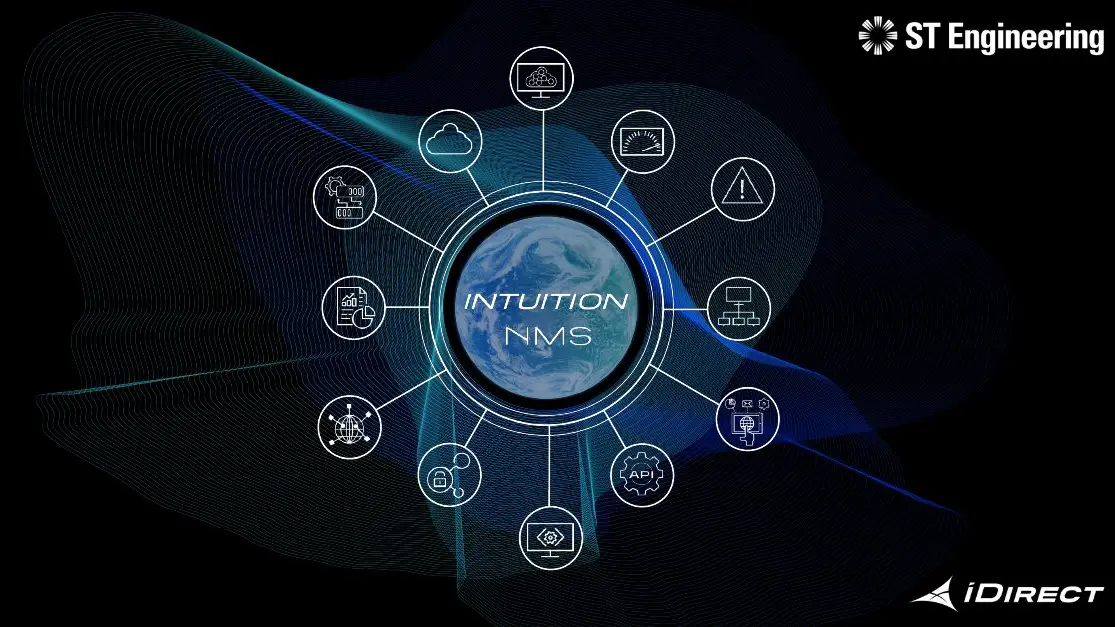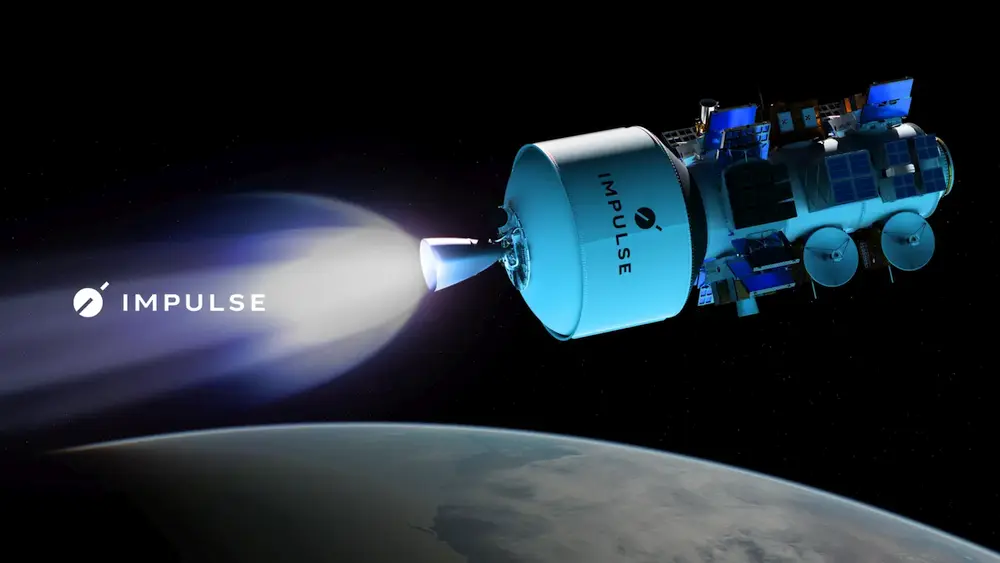Can iDirect’s Vision Unite the Fragmented World of Satellite Connectivity?
Oct 18, 2025
The satellite communications industry is undergoing a fundamental transformation as it moves away from the proprietary systems and siloed architectures that have dominated for decades. For a long time, these closed-system solutions worked well, but had difficulty keeping up with the fast pace of technological change and the increasing demand for flexibility and interoperability in the industry. Today’s operators and service providers are more and more aware of the drawbacks of vendor lock-in and are actively looking for alternatives that can help them innovate faster and respond to changing market conditions. This transition is a paradigm shift similar to the one that has happened in the telecommunications sector over the last two decades, where similar transitions led to unprecedented levels of innovation and agility in the market.
 ST Engineering iDirect’s Intuition promo. Credit: ST Engineering iDirect.
ST Engineering iDirect’s Intuition promo. Credit: ST Engineering iDirect.
ST Engineering iDirect stands at the forefront of this transformation, advocating for adoption of open standards and multi-vendor architectures as the way forward. The company advocates for network functions and architecture separation that allow operators to choose components and solutions from various vendors according to their own operational needs. This approach is driven by the adoption of 5G standards for interoperability and the growing reliance on APIs for seamless integration across diverse platforms. By following these principles, ST Engineering iDirect strives to give operators unprecedented independence and decision-making flexibility and accelerate innovation throughout the entire satellite communications ecosystem.
Multi-Orbit Solutions as a Strategic Advantage
Rather than viewing Low-Earth Orbit (LEO) constellations as the magic bullet for all connectivity needs, ST Engineering iDirect believes in a comprehensive multi-orbit approach that leverages the unique strengths of each orbital tier. Geostationary Orbit (GEO) systems are unmatched in their reliability and coverage, Medium-Earth Orbit (MEO) systems are well-suited for providing high capacity and balanced performance characteristics while LEO systems provide strong latency advantage for latency-sensitive applications. Using the company’s analysis, it has been shown that no one orbit level can meet the wide range of needs of today’s government, enterprise and defense applications, and a mixed approach is necessary for global coverage and resiliency in operations.
The strategic advantage of multi-orbit solutions is intelligent application-aware orchestration that optimizes the allocation of resources and ensures they are cost-effective and service quality. By combining multiple orbital systems, operators can support a broader range of use cases and better meet the diverse needs of their customer base across different geographies and deployment scenarios. This approach provides resilient and cost-efficient solutions through dynamic selection of the most appropriate orbit for each particular application, whether these are reliability, latency performance or capacity requirements. For defense and sovereign networks in particular, this hybrid approach leads to a perfect balance of reliability, security and performance that cannot be achieved with single-orbit networks.
The Role of Standards and Industry Collaboration
The standardization initiatives based on the work of organizations such as 3GPP, the WAVE consortium and DIFI standards are at unprecedented levels in the satellite communications industry. These collaborative efforts are a major shift from the historical industry trend toward proprietary solutions and siloed development, and involve the coming together of satellite manufacturers, operators, and infrastructure providers in a concerted effort to create interoperable solutions. The involvement and engagement across the industry are proof of the realization that terrestrial and non-terrestrial networks need to work together to address the requirements of today’s connectivity needs. This momentum represents a fundamental shift in industry mindset toward no longer viewing standardization as a constraint but rather as an enabler of innovation and market expansion.
 ST Engineering iDirect promo booth at the exhibition. Credit: ST Engineering iDirect.
ST Engineering iDirect promo booth at the exhibition. Credit: ST Engineering iDirect.
ST Engineering iDirect actively engages in these standardization efforts and is involved with the WAVE consortium in the standardization of the hardware that is used for software-defined modems and hub architectures. By adopting the 3GPP standards, the company is in a position to provide solutions in which operators can mix and match components from different vendors while having full interoperability. This collaborative approach extends beyond ground infrastructure to encompass payload development for satellites, as manufacturers increasingly develop software-defined satellites and microGEO platforms that can interoperate with ground systems based on standardized architectures. The scale and pace of these changes being adopted by the industry demonstrate a true industry-wide commitment to breaking down historical silos and allowing for greater flexibility.
Intuition Platform and Advanced Ground Infrastructure
ST Engineering iDirect’s Intuition platform embodies the company’s vision of flexible, cloud-native ground systems designed for the multi-orbit era. Built on cloud-native architecture principles, Intuition delivers significant infrastructure cost reductions of approximately 50% compared to traditional server-based systems while simultaneously providing substantially greater scalability and operational flexibility. The platform incorporates advanced capabilities including dynamic orchestration and resource management, enabling operators to efficiently allocate bandwidth and optimize network performance across multiple orbital systems and vendor solutions. Customer feedback from deployments across Asia indicates strong market reception, with operators particularly appreciating how Intuition aligns with emerging requirements from software-defined satellite operators seeking more resilient and cost-effective solutions.
 ST Engineering iDirect’s promo. Credit: ST Engineering iDirect.
ST Engineering iDirect’s promo. Credit: ST Engineering iDirect.
A standout capability of Intuition is its hybrid roaming functionality, which historically represents a significant gap in satellite network capabilities. The platform enables seamless roaming across different network types, including traditional satcom networks, 5G NTN non-terrestrial networks, and 5G terrestrial networks, fundamentally eliminating the network fragmentation that has constrained satellite operators. Advanced features such as global bandwidth management, dynamic resource orchestration, orbit switching, and dynamic bandwidth management provide operators with unprecedented flexibility and responsiveness in meeting diverse customer requirements. The platform’s ability to transition traffic between GEO and HEO orbits without service interruption, as demonstrated through deployments on Viasat’s GX network, exemplifies the level of operational optimization that Intuition delivers to its users.
5G Integration and the Path Forward
ST Engineering iDirect’s Satellite Interworking Gateway Function represents a critical milestone in enabling the integration of existing satellite infrastructure with 5G NTN standards while protecting operator investments in deployed equipment. This function acts as a bridge connecting non-3GPP satcom systems to the broader 3GPP ecosystem, allowing existing satellite modems and endpoints to integrate seamlessly with 5G network architectures without requiring the expensive and disruptive replacement of millions of deployed terminals. For operators managing extensive networks with millions of endpoints deployed on vessels, oil rigs, and aircraft, this approach eliminates the prohibitive costs, operational complexity, and service disruptions associated with comprehensive modem replacement initiatives. The Interworking Gateway Function enables operators to modernize their infrastructure incrementally while maximizing the value of existing capital investments.
Looking forward, ST Engineering iDirect’s technology roadmap emphasizes full 5G NTN capability integration while leveraging artificial intelligence and machine learning to drive the next generation of network optimization. The company plans to introduce AI-driven applications for global bandwidth management that will enable intelligent controller functionalities capable of real-time decision-making with unprecedented precision and adaptability. Hybrid roaming capabilities will continue to evolve, allowing subscribers to seamlessly move across multiple networks without confinement to single platforms or vendors, fundamentally transforming the user experience in satellite connectivity. As the company progresses from non-3GPP access and legacy satellite networks toward comprehensive 5G NTN integration, ST Engineering iDirect is positioning the satellite communications industry for a future characterized by unprecedented flexibility, interoperability, and user-centric innovation.





